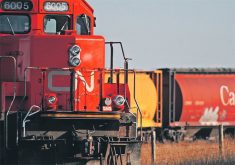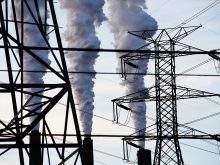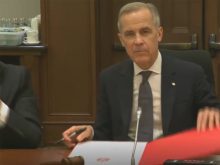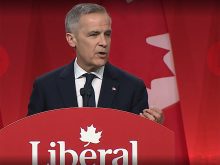The Agricultural Producers Association of Saskatchewan says crop sector could see costs increase by $2 to $4 an acre
Saskatchewan’s general farm organization has come up with an estimate of how much the federal carbon tax will cost the province’s grain and oilseed producers.
And the figure likely won’t sit well with farmers.
According to number crunchers at the Agricultural Producers Association of Saskatchewan, average production costs will increase by $2 an acre in 2019 and rise to $3.85 an acre in 2022.
The estimates were unveiled April 2 during the organization’s annual policy convention in Saskatoon.
“One of the frustrations that we’ve had through the whole discussion around the development of the (federal) backstop carbon tax is that we’ve never seen any numbers from the federal government on the indirect costs (to farmers),” said APAS general manager Duane Haave.
Read Also

Crop quality looks good this year across Prairies
Crop quality looks real good this year, with the exception of durum.
“They have provided farm groups with their estimation of the direct costs for on-farm fuel, but we know that there are a lot of other costs involved.”
The APAS estimates are based on projected cost increases for a handful of key products and services that are used by almost all of the province’s 20,000 grain farmers.
Specifically, APAS is projecting 2019 cost increases of:
- 28 cents per acre for consumption of propane or natural gas used to dry harvested grain, rising to 89 cents per acre in 2022.
- $1.34 per acre to move harvested grain by rail from prairie delivery points to export position in Vancouver, rising to $2.03 per acre in 2022.
- 16 cents per acre to move grain from Saskatchewan farms to elevator locations using contracted trucking companies, rising to 39 cents per acre in 2022.
- 15 cents per acre for the delivery and consumption of fuel used to heat farm buildings, increasing to 39 cents per acre in 2022.
- Six cents per acre for on- farm electricity consumption, rising to 14 cents per acre in 2022.
The APAS calculations are based on established carbon tax rates starting at $20 per tonne of carbon dioxide equivalent in 2019 and increasing to $50 per tonne in 2022.
The organization used theoretical scenarios assumed to be a reasonable representation of a typical grain farm in the province.
For example, rail cost increases for moving grain from Saskatchewan to export position in Vancouver were calculated from Melfort, Sask.
Custom trucking costs assumed an average one-way haul of 63 kilometres, from farm to elevator.
The calculations did not include cost increases linked to farm fertilizer consumption because of the complexity of taxation rates on fertilizers.
If the $2 per acre estimate is reasonably accurate, the total cost to the province’s crop producers would be in the range of $60 million per year in 2019, increasing to $120 million annually in 2022, based on assumed provincial plantings of 30 million acres.
That number would increase based on costs incurred by the province’s livestock producers.
“We know there will be other costs (in the crop sector) because fertilizer hasn’t been added,” Haave said.
“It’s our best calculation … but if anyone out there has better numbers, we’re happy to see them.
“If there are any economists or government officials who think they can pencil this out better than we can, we’d be happy to know it, but we think producers really want to have a handle on what the potential impacts are.”
At their two-day policy conference in Saskatoon, APAS delegates heard presentations from a variety of experts involved in assessing greenhouse gas emissions from the agriculture sector, calculating the value of carbon sequestering farm practices and devising policy recommendations that could help to offset the costs of a federal carbon tax.
Delegates also discussed a variety of mechanisms that could potentially be used to compensate grain and livestock producers for reducing emissions.
Those mechanisms included soil carbon credits, financial incentives for the retention of grasslands and wetlands, and policies that discourage deforestation and encourage the use of prairie shelter belts.
Haave said efforts to calculate the financial impact of the federal carbon tax are an important step in designing fair and effective government policies.
“They (Ottawa) can’t ignore the impacts that they’re putting on the farm sector,” Haave said.
APAS president Todd Lewis said attaching a per acre cost to the federal tax is an effective way to help the province’s growers understand the financial impact of Ottawa’s environmental initiatives.
He said the Saskatchewan agriculture sector is frustrated that Ottawa has not provided an estimate of potential costs on prairie farmers.
Documents acquired by The Western Producer through access to information provisions show Ottawa learned as early as January 2017 that farm production costs would increase by an average of 1.45 percent in Western Canada with the implementation of a federal carbon tax.
However, those numbers were not shared with provincial farm leaders.
The APAS estimate of $2 per acre or more will come directly off the farmer’s bottom line, said Lewis.
On his farm, that will amount to $20,000 this year, based on expected 2019 plantings of 10,000 acres.
“There no way we can pass that cost along to our customers because we operate in a world market and our competitors don’t have a carbon tax, whether it’s the United States, Australia or Eastern Europe,” Lewis said.
“The ironic part of this is that farmers need to invest in new technologies if we’re going to improve our carbon footprint … but (the tax) leaves less money in our pockets to invest in these new technologies.”
Lewis said Ottawa needs to expand the number of carbon tax exemptions offered to the prairie farm sector or provide larger rebates to mitigate the impact on primary producers.
“The average Saskatchewan farm family is going to get $660, we’re told, as a rebate,” Lewis said.
“Well, that won’t even begin to cover what we’re going to pay in additional agricultural costs.”


















